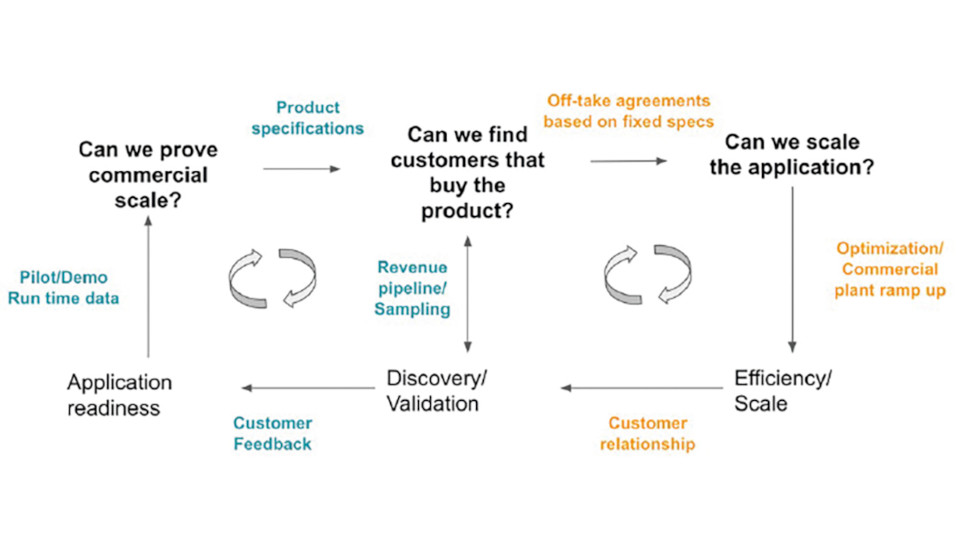
Crossing the commercialisation chasm
As a late-stage investor focusing on the European bioeconomy, the ECBF is carefully assessing the maturity of any technology, but more important than maturity is the ability to reach commercial scale. What governs that scale-up, and how do we assess it? What role does the TRL score play, and what key questions do we ask? An excerpt into a framework.
The scale-up stages are very much governed by the maturity of the technology, which is expressed through the Technology Readiness Level (TRL) scale. The TRL scale has widespread adoption and mainly refers to the technology development stage. Nevertheless, many companies fail to bridge the gap between the maturity of a technology and the commercialisation strategy. In the industry, the valley of death term is a common phrase capturing the inability to commercialise products or technologies. Still, the valley of death concept fails to consider adoption and suggests that once enough funds are captured, any company can overcome the valley of death. A slightly differentiated view suggests that it’s not about surviving the valley of death but rather about ramping up the growth curve to cross the commercialisation chasm. Put differently, having enough time and capital will not make you a successful company – proving commercial scale will. So, what needs to be considered when crossing the commercialisation chasm?
When we at the ECBF assess companies within the Circular Bioeconomy, we have mainly three questions in mind: Can we prove commercial scale? Can we find customers who buy the product? Can we scale the application?
All these questions are linked together through various feedback loops, and each step demands certain proof points and data sets. The quicker the company can move through the loops and thus provide these proof points, the quicker the ramp-up and adoption are. Thus the ability to pass the commercialisation chasm and scale.
Can we prove commercial scale?
To answer this question, we need to consider the product itself, the run-time data quality as well as the conditions under which the pilot/demo has been running. We assess the bottlenecks and how well the process is implemented. Further, we assess the current techno-economics, CAPEX, and cost developments, as well as feedstock-to-product yields. This helps us to develop a view of the ability to reach the desired product specifications and the ability to commercially scale up.
Can we find customers that buy the product?
To answer this question, we review the customer specifications, validate the customer interactions and collect customer feedback. We review off-take agreements and the revenue pipeline and also understand pricing and sustainability benefits. This helps us to develop a view of how much commercial traction there is and if the company needs to tweak the application to further find the customer-product-specification fit.
Can we scale the application?
To answer this question, we review if there is enough feedstock available. We review the feedstock deployment model and assess if the company can create consistently reproducible product quality. We assess the location data and internationalisation strategy. Further, we carefully review the market segments and market size. This helps us to develop a view of the ability to scale the application efficiently and uncovers if there is further optimisation required.
Assessing all these questions gives us a clear perspective of where the company is regarding the maturity of a technology and the ability to commercialise and scale.


 FDA
FDA University of Geneva
University of Geneva MRM Health NV
MRM Health NV